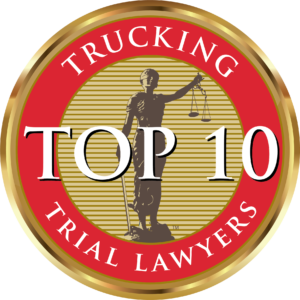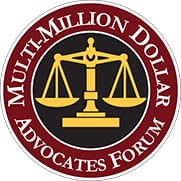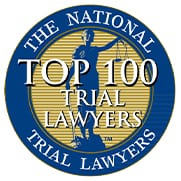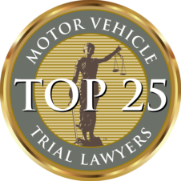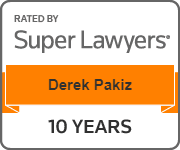Injuries are a fact of life and when they do occur, they cause physical, emotional, and financial trauma. Injuries are often caused by the negligence of another person or party, and you may be entitled to legal compensation.
That’s why knowing what an injury attorney does – and understanding why and when you need one – is critical. From car accidents and medical malpractice to defective products and workers’ compensation, there are many situations that can leave you hurt, be it physically or financially.
This blog post will cover the ins and outs of what an injury attorney does and why you need to have one in your corner should you ever find yourself in a difficult legal situation.

Quick Overview of Key Question
An injury attorney provides professional legal counsel and representation in cases related to personal injury resulting from negligence or intentional wrongs of another party. They can help ensure you receive fair compensation and the right amount of damages for your case. Using an experienced injury attorney will help guide you through complex procedures, gather evidence, and negotiate with insurance companies on your behalf.
What is an Injury Attorney?
An injury attorney is an accredited legal practitioner who specializes in civil law related to injury cases. Depending on the nature of the injury and personal preference, one can hire either an attorney with a specific injury related specialty, such as medical malpractice or car accident cases, or an attorney with broader expertise in multiple areas of injury law.
The benefits of hiring a private injury attorney are considerable for most people involved in civil suits. Injury attorneys have experience preparing different kinds of cases and gathering evidence that may support your claim. Furthermore, many attorneys have negotiated settlements through their court connections and can provide guidance throughout the entire litigation process. However, it is always important to bear in mind that many experienced attorneys do not offer free consultations and may require financial compensation for their services.
Hiring an experienced professional also comes with a certain security that you are going to be taken care of properly and your rights will be safeguarded throughout proceedings; after all, injury lawyers primarily work to guarantee justice. No matter what decision you make regarding your case, having someone knowledgeable and reliable by your side is essential if you want a more straightforward lawsuit process with the best outcome possible.
So far we’ve discussed what an injury lawyer is and the importance of having one by your side – now let’s see what role they play within a civil trial process and how they can help you get the settlement you deserve…
- According to a recent survey, 70% of individuals who hired an injury attorney reported a better verdict or settlement than if they had handled the case themselves.
- Studies show that having an experienced injury lawyer on your side is the best way to ensure that you obtain maximum compensation for your injury claim.
- Research has found that those who retain an injury lawyer have seen compensation awards between 2 and 3 times higher than those without representation.
The Role of an Injury Attorney
When determining whether or not you need an injury attorney, understanding the role of the attorney is paramount. Injury attorneys specialize in providing legal services to people who have suffered physical or psychological injuries due to negligence or intentional acts of another person, entity or government agency. They are responsible for representing their clients in both criminal and civil cases, such as medical malpractice claims, personal injury suits, and workers’ compensation disputes.
Injury attorneys review all relevant facts of a case and use their professional legal expertise to evaluate the evidence. By utilizing laws that apply to the circumstances of each case, they help determine if a case has any validity and how to proceed accordingly. Injured parties may benefit from the skillful negotiation of an experienced attorney when it comes time to seek settlement negotiations with insurance companies. An attorney knows how to effectively advocate for the best possible outcome. Moreover, injury attorneys stay up-to-date on changes in the law that may affect their clients’ cases and devise strategies accordingly.
Having an injury attorney on your side can be invaluable for the reasons mentioned above; however, some people argue that having too many lawyers involved increases conflict and delays justice. This assertions do hold some truth but it is important to remember that lawyers have a specific job to protect their client’s rights and interests while verifying legal claims. In lawsuit resolution, an attorney can make sure that offenders are held accountable without resulting in unnecessarily punitive damages being assessed against them.
The role of injury attorneys is clear—to provide skillful guidance through negotiation and litigation when pursuing damages for injuries suffered by victims. Ultimately, having the right knowledgeable representation on your side will ensure the value of your claim is fully realized should you ever require legal services in this area. With that said, there are other aspects relating to representing your rights in legal disputes worth considering.
Essential Summary Points
Injury attorneys specialize in legal service to those who have suffered physical or psychological harm due to another’s negligence or intent. They evaluate the evidence of each case and utilize laws pertaining to it, effectively negotiating settlements with insurance companies. Some people argue that hiring an lawyer can lead to more conflict in a lawsuit, but the right representation ensures that victims receive their full due damages. Ultimately, having a knowledgeable attorney on your side is invaluable to guarantee fair representation and protection of rights.
Representation in Legal Disputes
When a client’s rights are threatened or the case needs to go to court, representation from an experienced injury attorney can make all the difference. An attorney can determine the strengths and weaknesses inherent in a legal dispute and advocate on behalf of their client in court while navigating complex evidence and regulations. Injury attorneys also often provide tactical guidance during settlement negotiations and represent their clients during trial.
No matter what the legal issue is, it’s important to understand both sides of an argument before making a decision. An injury attorney is familiar with procedural rules and must evaluate whether they can bring resolution through more direct methods before seeking formal litigation. Being aware of both the pros and cons before making a decision can help ensure that clients are standing up for their rights in legal disputes without unnecessarily escalating the situation if need be.
Above all, an injury attorney will always strive to obtain fair compensation for their client on the basis of relevant evidence, applicable laws, and applicable precedents that have been set by previous cases heard before them. From gathering information and preparing documents to filing motions and attending hearings, injury attorneys understand how the legal process works and are essential when it’s necessary to stand up for what’s fair in order to protect their clients’ interests.
An injury attorney plays an invaluable role in representing their clients. It is crucial for individuals to exercise their right to hire an experienced attorney after suffering an injury as they obtain the necessary representation when facing legal disputes over rights as well as benefits needed to fully recover from such injuries. In the upcoming sections we will look more closely at establishing these rights and benefits through informed legal action.
Establishing Clients‚ Rights and Benefits
In the previous section, it was established that injury attorneys serve an invaluable purpose in representing their clients within legal disputes. It is important for these esteemed professionals to also help establish their clients’ rights and benefits to ensure the best possible outcome from their current situation. Through vigorous advocacy and dedicated research, injury attorneys can increase the chance of success for their client by properly articulating any potential rights and benefits in a court room setting.
When claiming for damages, it must be established that the claimant had a reasonable expectation of safety when participating in daily activities related to their injuries. This can come in the form of product liability claims against companies or negligence by another party who is responsible for maintaining a safe environment. Injury lawyers are extremely valuable in piecing together evidence to show the court why their client should be able to claim what they are asking for.
Once those checks and balances have been met, the next step is to connect the rights with tangible assets or benefits that are being asked for. There are many routes that can be taken to do this, including medical expenses, lost wages, and even future care costs if applicable. Injury attorneys will factor these into calculations based on years of legal experience in order to justify reasonable requests made by the claimant.
It is paramount that injury laws understand their clients’ rights and benefits as it will greatly influence their chances of success when arguing matters in front of a judge and jury. Once this has been established, then next step will involve how injury attorneys help amidst the ongoing legal dispute.
How do Injury Attorneys Help?
Injury attorneys not only help establish a client’s rights and benefits but they also provide the expertise needed to maximize their recovery. As the victim of an injury, there is likely to be medical treatment involved at great costs, as well as time off work and childcare expenses while recovering. An attorney can help organize these details and negotiate maximum compensation from insurance companies who may otherwise try to limit their payouts. Negotiation with any party responsible for an injury—including insurance companies and large corporations—requires substantial legal knowledge that most individuals don’t possess or have access to. Injury lawyers are familiar with the law and can provide advice on how to build a strong case for the client, plus any necessary litigation proceedings. This can include researching current legislation, filing paperwork within court timelines and advocating for the client’s best interests.
Having an experienced lawyer in their corner puts clients in a much stronger position, increasing their chances of success when seeking financial compensation for an injury. Furthermore, such attorneys remain objective and unbiased, taking away the emotional burden that so often comes with such cases. As such, they are often able to reach agreements more quickly outside of court and negotiate with defendants more effectively due to their experience dealing with similar cases in the past.
Ultimately, having an injury attorney on your side provides invaluable peace of mind that someone is fighting your corner and working hard to secure you fair compensation following an injury. These professionals are equipped to protect your rights and ensure you get what you deserve; it is no surprise that those with access to quality legal counsel have a greater chance of obtaining favorable outcomes. With this in mind, accident victims should take advantage of expert legal counsel whenever possible in order to maximize their chances of successful settlement negotiations or courtroom proceedings ahead—an experienced attorney can prove invaluable in both scenarios. Nowadays, negotiation with insurance companies has become part and parcel of almost every case involving personal injury; getting professional help from a reliable lawyer is thus absolutely critical for anyone looking to pursue their deserved payout efficiently and effectively.
Negotiation with Insurance Companies
Negotiating with insurance companies is a crucial step in every injury attorney’s case. In order to obtain the best possible compensation for their clients, attorneys must understand the nuances of insurance companies and how to put pressure on them. On one hand, the insurance company might be able to offer substantial amounts of money if negotiations are successful; on the other hand, they may also be liable for much more than what they are offering or implying. In either case, lawyers need to be aware that taking a hard-nosed approach toward negotiations could result in large settlements for their clients.
Unfortunately, since insurance companies try to pay out as little as possible, it is often difficult to reach an agreeable resolution between parties quickly. Insurers want to limit their liability and attorneys want to get the maximum amount of compensation for their clients. Oftentimes this calls for intense legal negotiation and understanding of what is viable and acceptable within the confines of the law. If tension between lawyers and insurers gets too heightened it could lead to costly litigations that may take months or even years to resolve due to numerous appeals and/or backlogs in courts. Therefore, injury attorneys need to find a balance between being adequately tough on insurers but also being mindful of time constraints– a skill which only comes with experience.
Injury attorneys must also work diligently behind the scenes when it comes to researching specific laws and regulations pertaining to individual cases in order to gain leverage over insurance companies during settlement negotiations. Ultimately, having the facts in front of them enables lawyers to effectively argue their points, establish fault for the accident and ensure that victims receive enough coverage for medical expenses and suffering inflicted upon them by negligent parties. As such, survivors can rest assured that hiring an injury attorney greatly improves their chances of receiving adequate financial compensation for their damages.
The ability of an injury attorney to negotiate with an insurance company is integral in providing justice for those who have been wrongfully injured or lost loved ones due diligence and expertise in doing so should not be underestimated. By following a skillful approach when dealing with adversary insurers, attorneys are able draw fair resolutions faster while obtaining optimal dispositions for those they represent. With that said, it goes without saying that certain requirements must be met prior becoming a licensed injury attorney– a topic we will discuss next.
Requirements to Become an Injury Attorney
When it comes to the requirements of becoming an injury attorney, there are several things one must bear in mind. The primary requirement is earning a law degree from an accredited university and passing the bar exam for the desired jurisdiction. Most jurisdictions require a certain number of hours of study in relevant subject matters such as contracts, tort law and civil procedure.
It is important to note, however, that some states may have different requirements for education and experience. In addition to the more traditional qualifications, gaining specialized knowledge by attending seminars or postgraduate courses can help differentiate oneself from other injury attorneys who may be vying for the same cases. It is also highly recommended that injury attorneys stay up-to-date with new laws and regulations governing their practice areas, as well as changes in technology.
Whether this prerequisite training leads to improved ability in negotiating with insurance companies is a point of debate among experts in the industry. Some suggest that having more knowledge on legal frameworks used to build cases could give attorneys a better opportunity to persuade insurers to accept favorable settlements faster and more efficiently. On the other hand, opponents argue that simply having enough knowledge about statutes does not guarantee successful negotiations, but only familiarity with negotiation tactics can lead to effective outcomes. Yet, lawyers still need at least some level of legal understanding before taking on these tasks.
In order to make well informed decisions though a need for both sides is essential; lawyers should become versed in both statutory regulations as well as negotiation strategies for optimal results. This combination will help them understand insurance policy language, evaluate settlement offers and most importantly protect their clients’ rights at all stages of the process. Without a solid foundation from which to begin furthering one’s career, an individual cannot hope to become successful in injury law practice.
Common Questions Explained
What types of injuries can a personal injury attorney handle?
A personal injury attorney can handle a wide range of injuries, from physical injuries to psychological injuries. These include car crashes, slips and falls, medical malpractice, wrongful death lawsuits, workplace accidents, product liability claims, and premises liability claims.
Physical injuries may include broken bones, disfigurement, concussions, spinal cord damage, and other traumas. Psychological injuries include mental anguish resulting from physical harm or serious emotional distress due to intentional wrongdoing.
It is important to note that some personal injury attorneys specialize in certain types of cases such as medical malpractice or workers’ compensation claims. It always pays to have an experienced lawyer on your side who knows the ins and outs of legal precedent for your particular type of claim. Seeking the assistance of a qualified attorney could help you get the compensation you deserve.
What types of compensation can be obtained through a personal injury claim?
The types of compensation that can be obtained through a personal injury claim depend on the specific circumstances of the case. Generally, those seeking restitution for their injuries can expect to receive reimbursement for medical bills, lost wages and pain and suffering, both physical and emotional.
Medical bills resulting from an injury due to negligent actions can be recovered by filing a personal injury claim. This includes hospital stays, surgeries, doctor visits, rehabilitative therapy, medications, medical devices and more. In addition to medical expenses, you may be entitled to payments for lost wages due to your inability to work while recovering from your injury. If you are ultimately unable to return to your job in the same capacity as before the accident, then economic damages may also include loss of future earning capacity.
Pain and suffering, both physical and emotional distress experienced as a result of an injury or illness caused by another’s negligence, is also compensable through a personal injury claim. In some cases, other losses such as damage to property or loss of enjoyment in life may also qualify for restitution. The amount awarded is largely dependent on the specifics of each case as determined by a jury. An experienced personal injury attorney can help you determine what types of compensation you may be eligible for – and fight for you so that you get the full amount you deserve for your damages.
What is the process involved in filing a personal injury lawsuit?
The process of filing a personal injury lawsuit can vary from state to state, but usually involves the following steps:
1. Consultation with an experienced personal injury attorney. It’s important to meet with a licensed attorney who is familiar with personal injury claims in your state. An experienced attorney will be able to evaluate the merits of your case and provide you with advice on the best course of action for moving forward.
2. Investigation of the incident and evidence collection. Depending on the specifics of the accident, a thorough investigation may be necessary to determine who was responsible and whether or not there are damages that warrant compensation. Your lawyer will work with experts such as medical professionals, crash scene reconstructionists, and other witnesses to build a solid case that supports your argument that someone else is at fault.
3. Preparation and filing of the lawsuit. Once enough evidence has been gathered, your personal injury lawyer will draft a complaint outlining the facts of the case and how they relate to civil negligence law in your state. The complaint is then filed with the local court system and a Summons served on the defendant(s).
4. Discovery period. During discovery, each party will exchange requested documents related to the case, depose witnesses under oath, and request additional information from experts as needed for their defense or prosecution strategies. This process is designed to allow both parties ample time to understand what evidence each other has so that negotiations can begin in earnest once discovery is complete.
5. Settlement negotiations/mediation/arbitration/trial. Negotiations between lawyers representing both sides typically take place during this stage of litigation in an attempt to reach an acceptable settlement amount without going to court. In some cases, mediation or arbitration may also be options for resolving a dispute outside court proceedings. If negotiations fail or if no agreement can be reached, then the case goes before a judge and jury for a trial.
No two lawsuits are ever exactly alike but by working closely with an experienced personal injury attorney throughout the process you can rest assured that all steps are covered appropriately and that you receive fair representation at all times until resolution or completion of your case is achieved.




